Past Work
Here you'll find examples of our past work.
The Golden Gown of Uppsala


This is a stunning recreation of the 14th century extant gown on display in Uppsala, Sweden.
It was very technically challenging to recreate! We made it from a limited piece of handwoven fabric.
The fabric is unusually narrow, less than 1 meter wide. Therefore we used fabric piecing techniques to cover the individual pattern pieces, while also carefully matching the fabric motif throughout.
The gown was shaped to fit closely and fasten with 28 hand-stitched eyelets and a handmade silk cord.
The pattern has several features specific to medieval garments - sleeve seams up the back of the arms, a deeper armscye than modern garments, and skirt gores.
Red Fiaba
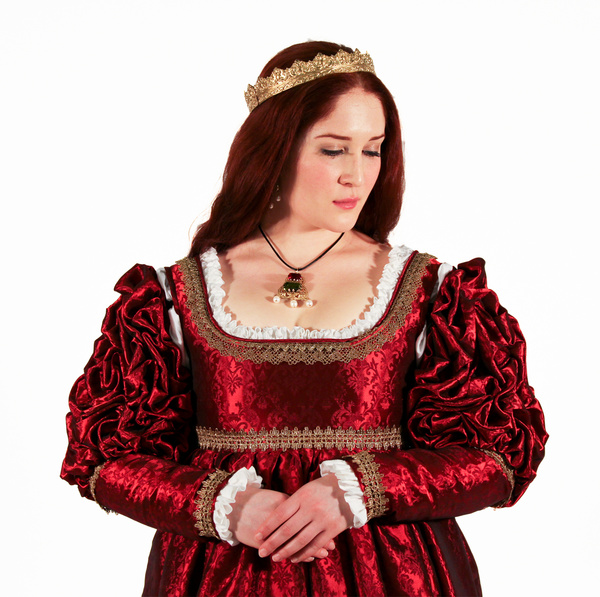
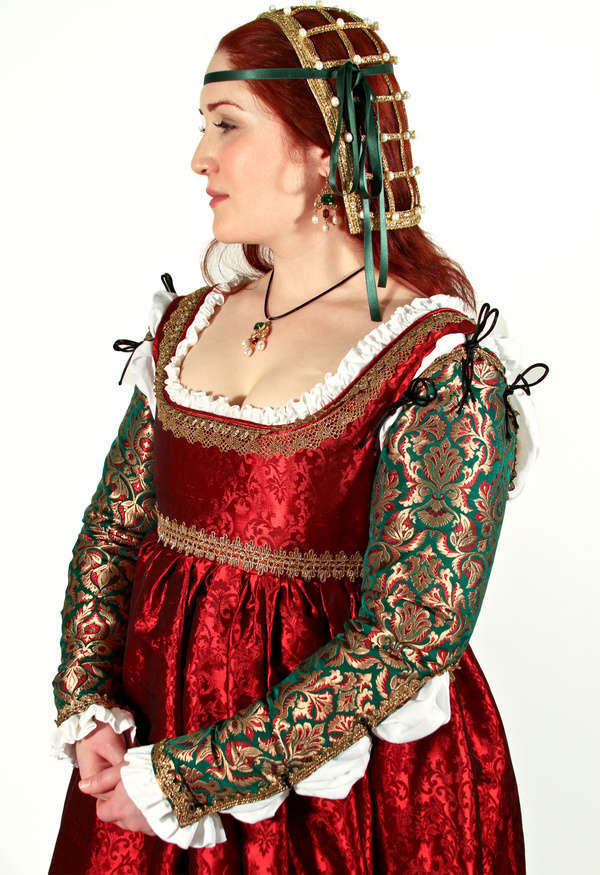
We made this gown inspired by the styles seen in works by Renaissance painter Agnolo Bronzino.
We recreated Florentine style from the first half of the 16th century. The slightly raised waistline and densely ruffled sleeves are charateristic of noblewomens’ dress of the time.
The gown coordinates with several styles of sleeves which tie in through hidden lacing rings at the shoulder, and can be changed to suit the wearer’s taste.
The rose red silk brocade has a slight black sheen that enhances the textured sleeves.
Borgia Gown
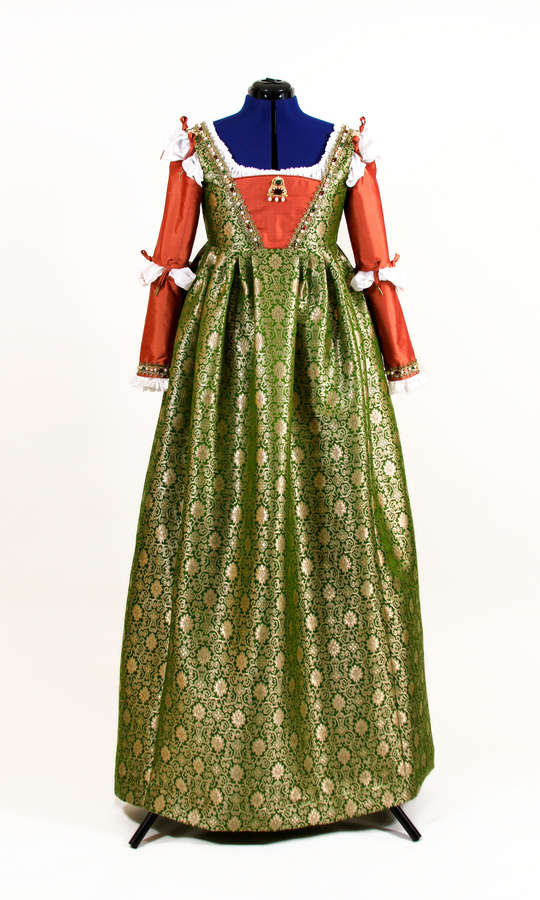
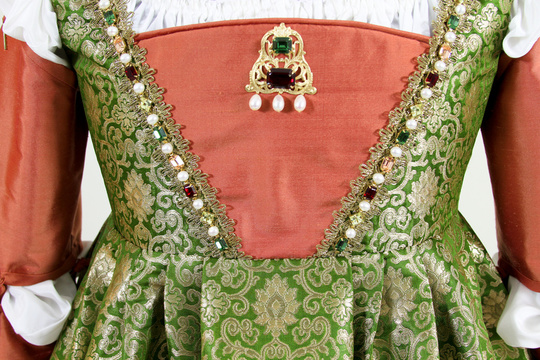
This is one of our favorite projects. This gown was made to order for a client who would be wearing it to a ball in Austria.
It was inspired by similar gowns worn in the TV series, The Borgias. We made it from a hand-woven silk.
We had commissioned several bolts of the silk in a special shade of natural leaf green, because it is difficult to find; most green silks tend to be olive-toned or too intensely saturated for historical clothing.
The sleeves and bodice are a terracotta silk trimmed with freshwater pearls and glass stones.
They can be removed and interchanged with other styles.
We also made a silk batiste camicia (chemise) to wear underneath, based on an extant early 1500s camicia, which we redrafted for the client who was much taller and longer-limbed than the original.
Red Cloak
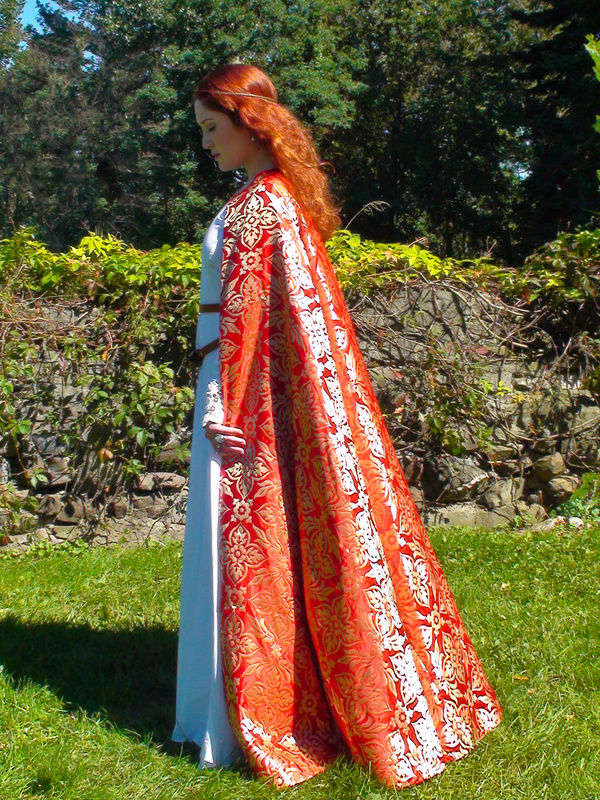
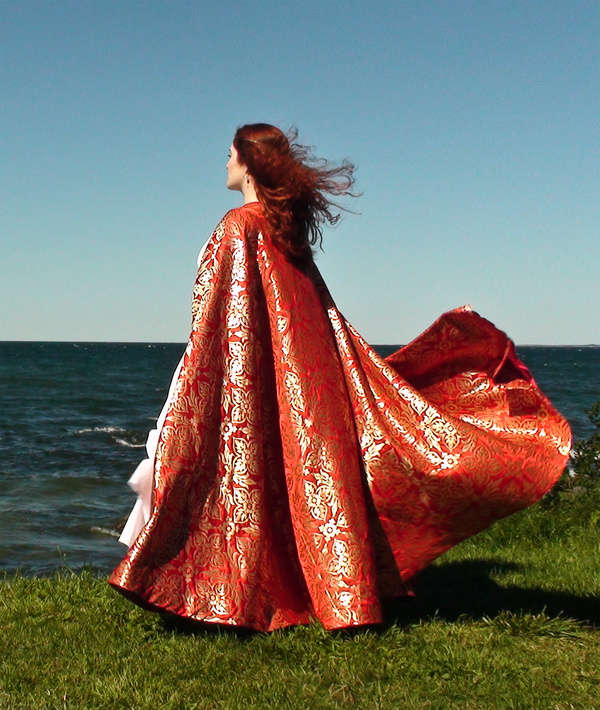
We made this cloak in a red and gold silk with a 15th century quatrefoil motif.
The silk was hand-loomed, so it brought several challenges.
We had to handle the fabric with extra care because the gold weft threads (which make the design) are free-floating on the reverse side and had to be protected from snagging. Also, handwoven fabric tends to stretch along the bias more than machine-made fabric, and we had to take that into consideration to keep the hem level.
Finally, since the weft is made of metal gilt threads that crease more easily than silk, the cloak required a great deal of care in handling and construction. But the result was spectacular!
Habsburg
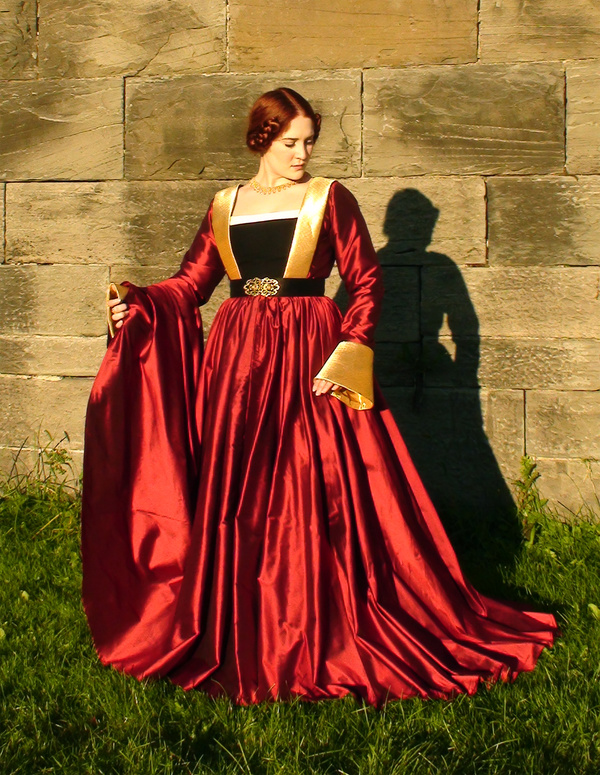
We made one of the first modern recreations of the extant gown of Mary of Habsburg.
The original dates to 1520 and is on display at the Hungarian National Museum.
As we developed the pattern we realized it had strong similarities to German Cranach gowns of the same period.
Note the unusually deep cuffs and open-front bodice, all drafted to original proportions.
Kirtle
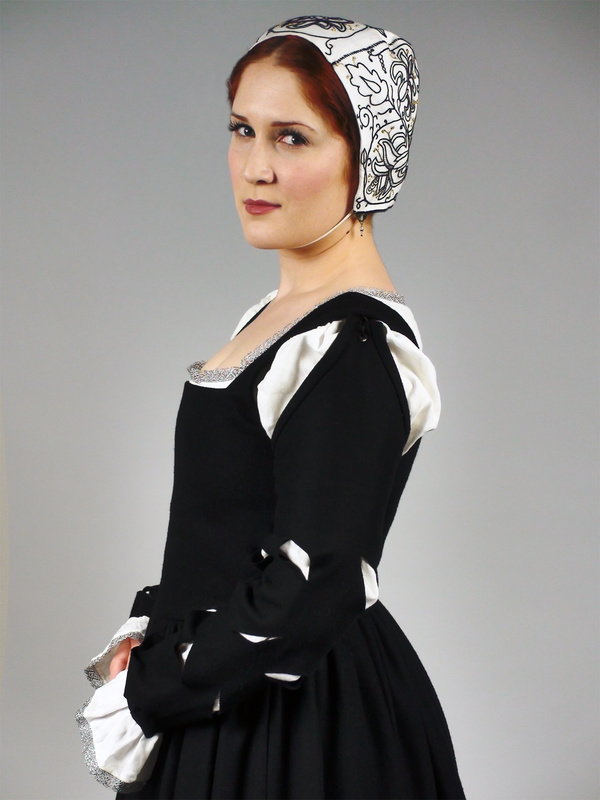
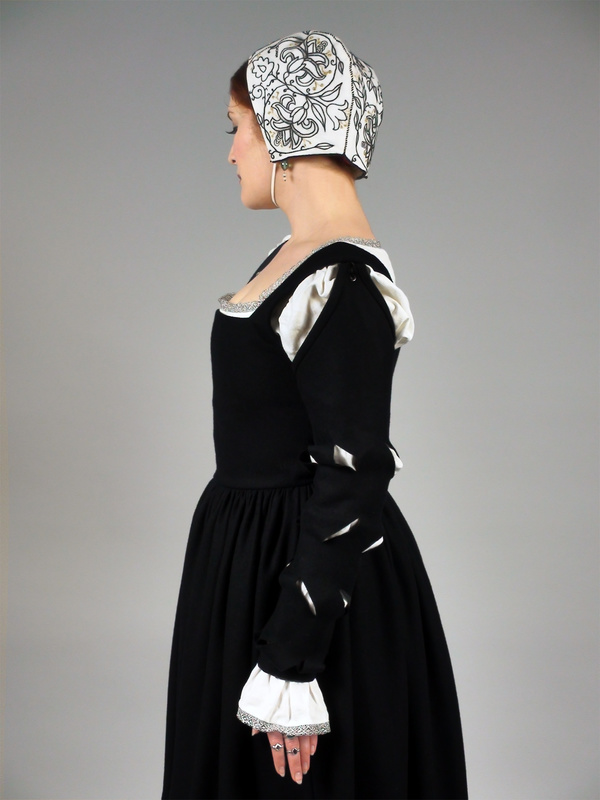
This is an English 16th century wool kirtle with removable sleeves with slashing detail.
The kirtle can be worn alone, and is a useful supportive garment under more elaborate gowns.
It was a long-enduring fashion from the mid 1400s through to the early 1600s.
We have made several versions, both fancy and plain, for American and European clients.
The linen coif is entirely hand-stitched, with hand-embroidery in black silk and gold couched thread in a 16th century botanical motif.
Houppelande
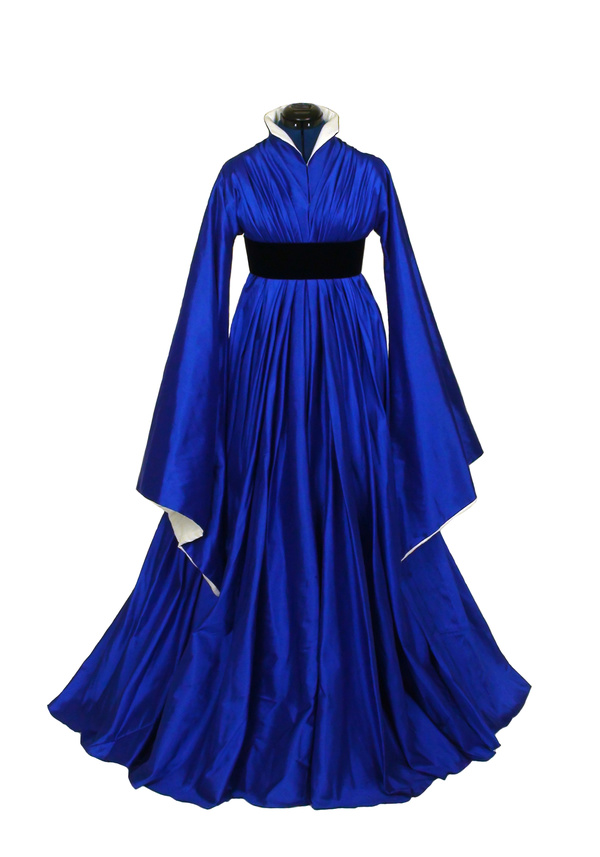
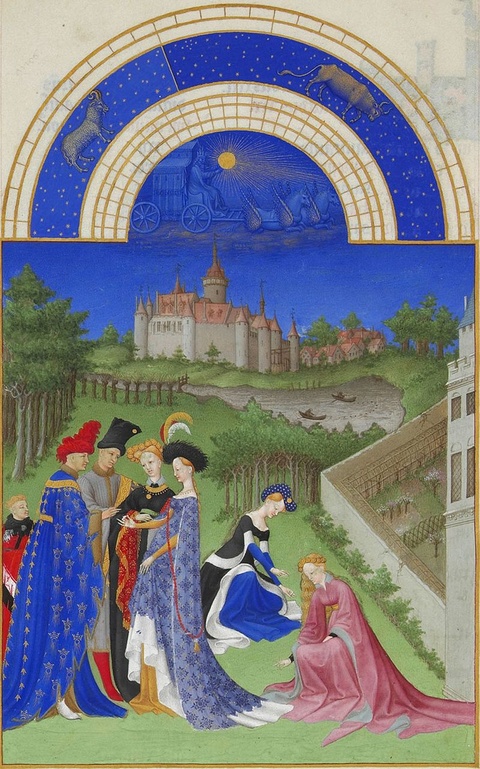
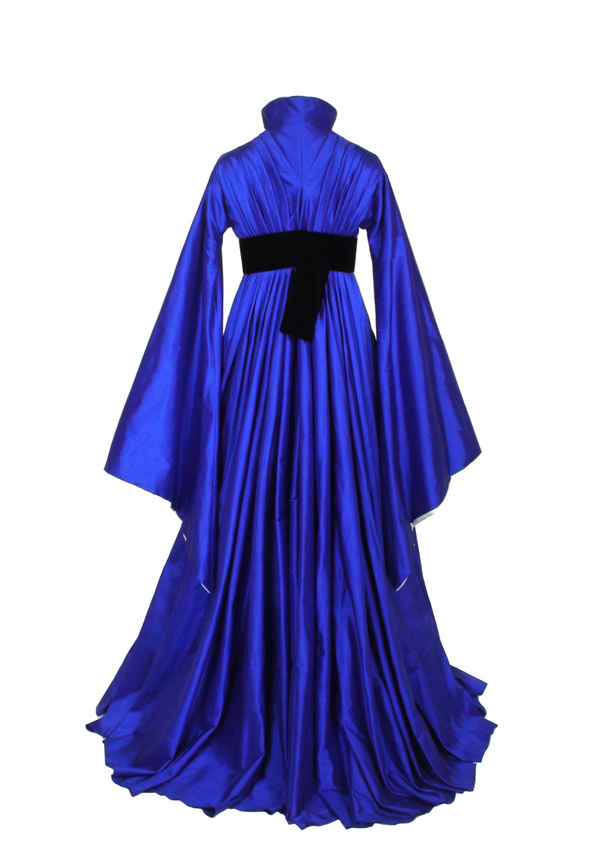
This is an early 15th century French gown called a Houppelande. It was an exciting challenge to make because it is a popular style with medieval history reenactors, yet it is very rare to see a reconstruction that truly captures the look and silhouette as seen in artwork.
We created a speculative pattern since no women's gowns survive of this style.
Our pattern succeeds in achieving the characteristic pleats running the entire distance from hem to the shoulder, an essential detail which is overlooked in most reconstructions.
We later came across artworks in the Gemäldegalerie in Berlin which show back views of a Houppelande, and we were pleased to see the collar seams were nearly identical to our speculative pattern.
This gown is in a gorgeous cobalt blue silk taffeta, and has a hem circumference of 11 meters! We made several versions for clients with various fabrics and sleeve shapes.
Blue Cape
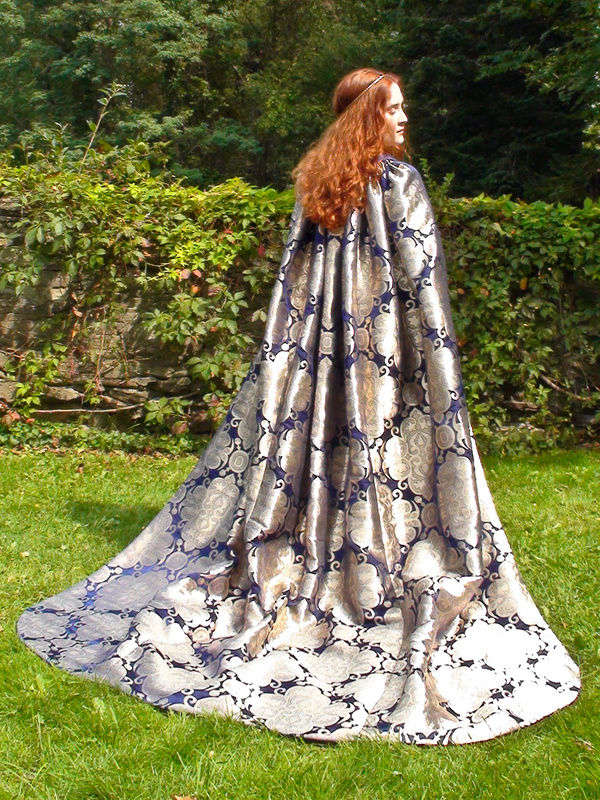
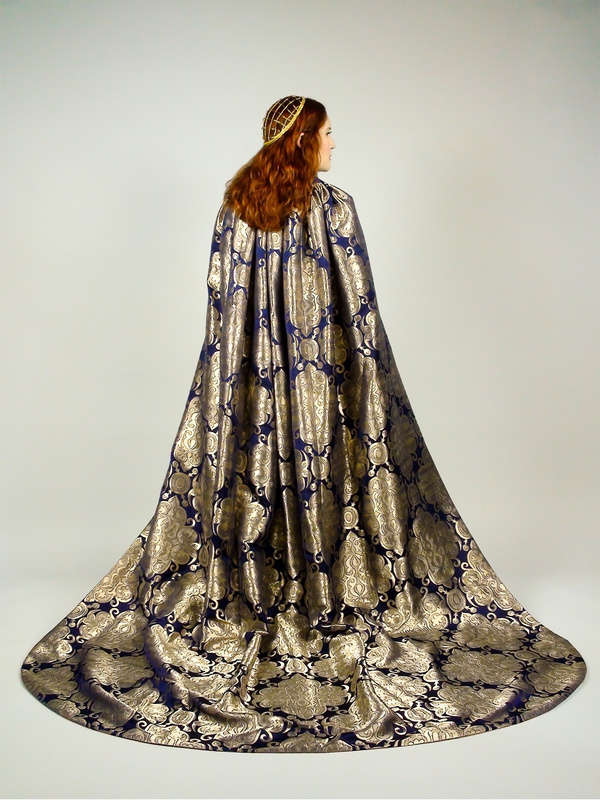
An elaborate cloak of handwoven blue silk brocade with gilt metal threads.
Long train, cartridge-pleated by hand to a fastening band.
Recreation of a cloak worn by queens in 15th century France.
Blue Fiaba
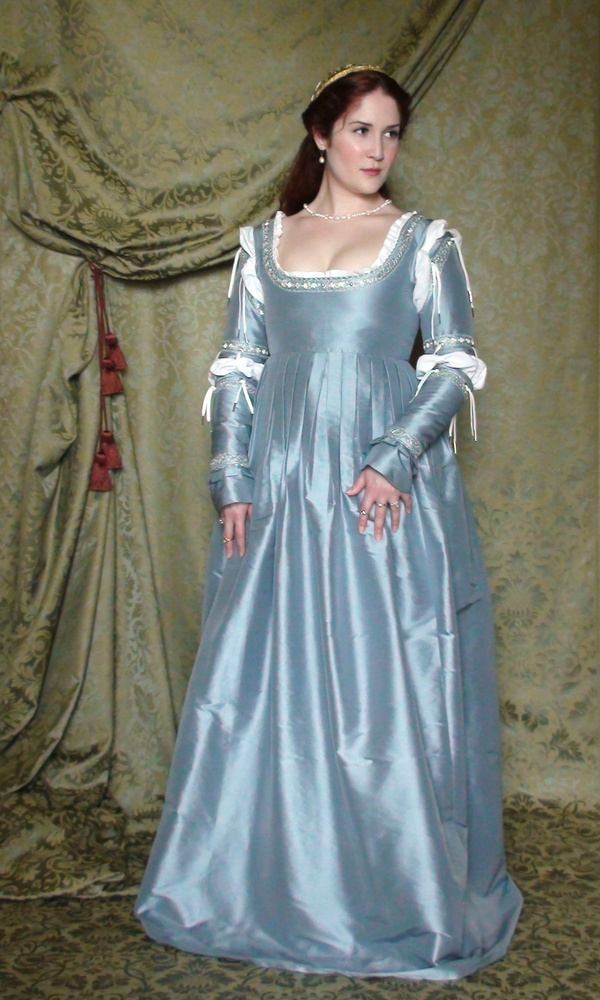
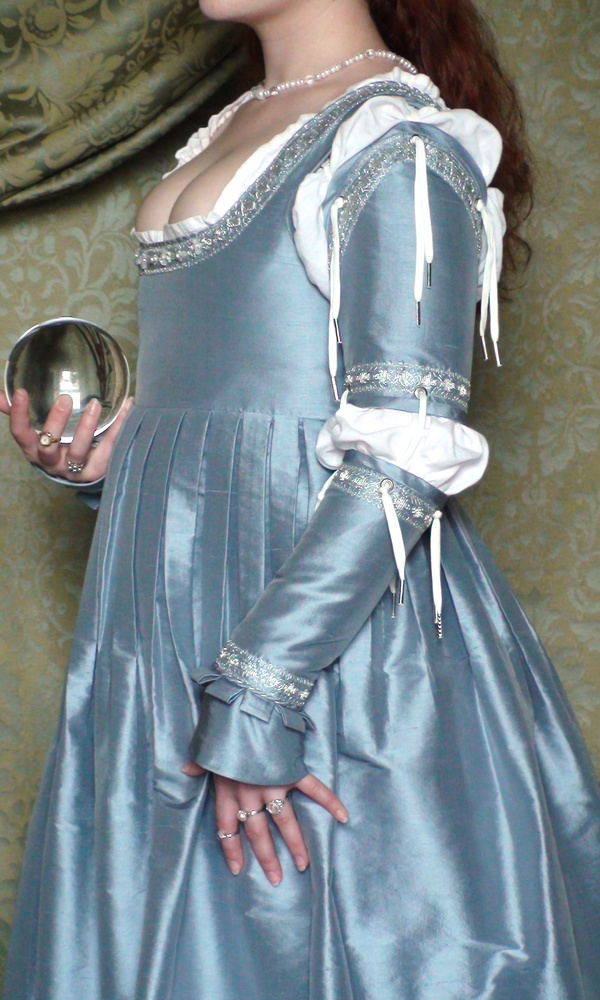
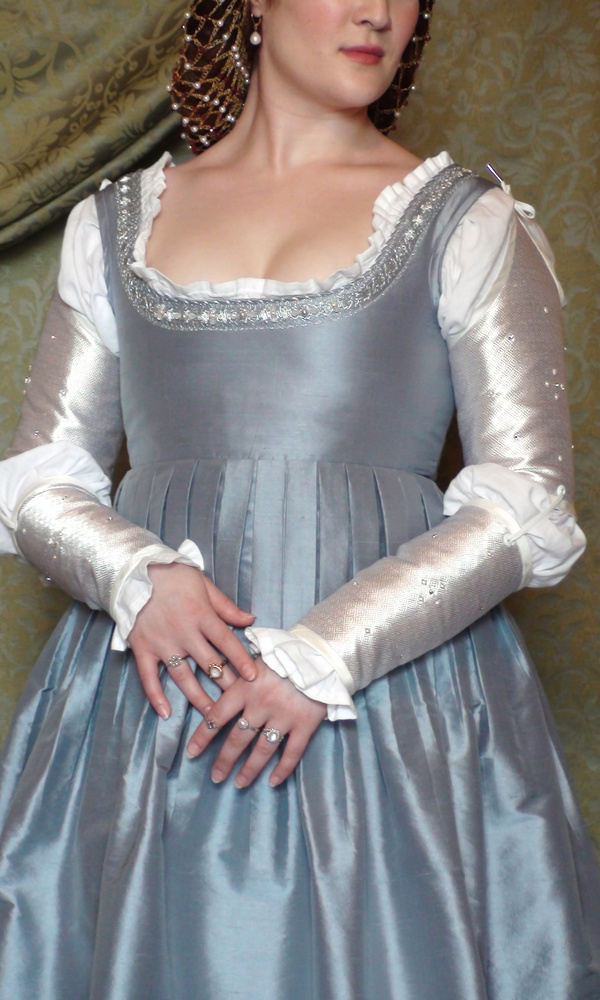
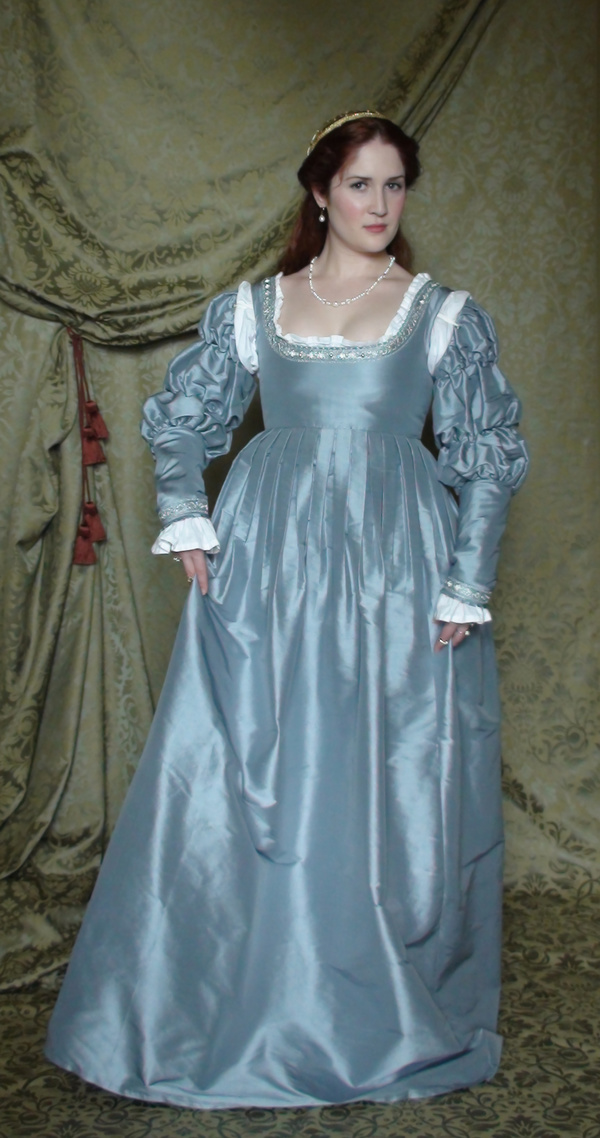
This iridescent blue silk taffeta gown is in a late 15th century to early 16th century Italian style.
We created it for a reenactor client in Paris.
With a scoop neck trimmed in silver bobbin lace and silver thread with moonstones, and freshwater pearls in white and gray.
The sleeves are removable and can be interchanged with six different sleeve patterns.
Our pattern has a wide neckline and moderate high waist which are universally flattering on all figures.




















